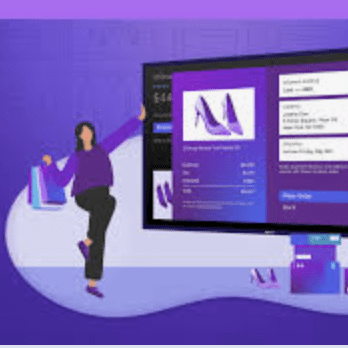In December 1977, consumer giant CFCP introduced Breen detergent to the metro New York market. Its introductory 25-cent coupon, delivered via free-standing insert, drew a very respectable 2.5% redemption rate that translated to more than 70,000 first-time users of Breen.
The only problem: There was no detergent named Breen. CFCP stood for Coupon Fraud Control Program, and, you guessed it, every coupon redeemed by retailers was for a non-existent product from a non-existent manufacturer. Can you say “gotcha”?
In 1977, a 50-cent Sunday paper might contain more than $30 worth of coupons. Marketers were pumping an estimated 72 billion coupons, worth about $14 billion, into the market annually. About $720 million worth — more than 5% — of these were being redeemed. Given this scale, the opportunity for fraud was enormous. That year, the U.S. Postal Inspection Service estimated that up to 15% of all coupons, or about 108 million, were fraudulently redeemed.
In August, the U.S. Postal Service challenged Blair Marketing to create a sting that would catch the crooks red-handed without disrupting legitimate redemption. The Breen coupon was the centerpiece of the first major coupon fraud offensive in U.S. history.
The operation Blair helped execute “caused an industry shake-up that revealed the level, scope and sophistication of coupon fraud in a way that absolutely couldn’t be refuted,” says Bud Miller, executive director of the Coupon Information Center.
The CIC is a not-for-profit association of manufacturers dedicated to protecting the integrity of coupons and other promotions. These manufacturers knew they were being cheated. They also knew that the worst areas for misredemption were New York, Philadelphia, Los Angeles and New Orleans. A search of just one coupon fraud location by the New York District Attorney revealed more than a million gang-cut coupons representing more than 1,400 products with a combined value of $250 million.
So New York’s U.S. Postal Inspector took the lead by placing the first Breen FSI coupon in the Dec. 11 editions of The Daily News, Newsday, and The Newark Star Ledger.
While none of the newspapers knew they were running a fake coupon, the firms that submitted the Breen coupon must have known they were guilty of misredemption, since no such brand existed. In fact, while the number of Breen coupons redeemed by retailers was pretty astounding, the USPS agents were struck by the quantity of coupons redeemed for legitimate brands. The crooks, in an act of monumental contempt for the system, were just snatching up copies of the Sunday papers wherever they could, stripping them of all of FSI coupons and gang-cutting them on paper cutters to reduce their labor.
Of course, some of the crooks played the game better than others. My first division manager at P&G was a sales legend by the name of John C. Cornell. He told the story of going into a grocery chain he suspected of cheating P&G with a handful of cleanly cut coupons.
“We’re not taking these,” he exclaimed righteously to the owner. “Let me see those,” the owner replied indignantly. After examining the offending coupons at great length he admitted, “You should have never been sent these.”
“Come to find out,” Cornell laughingly told us, “they had an old ringer-style washing machine in the basement that wasn’t hooked up to a water supply. They ran all their gang-cut coupons through the wash cycle before mailing them in so they’d look like they’d been handled. Somebody had been too lazy to ‘launder’ the fraudulent coupons that day.”
The Breen sting revealed three primary forms of coupon fraud:
-
Owners of single-store locations were submitting coupons under multiple business names in an effort to confuse anyone trying to track misredemption.
-
Stores were submitting coupons under true names, but for more coupons than they had proof of purchase, or in the case of Breen, redeeming coupons for product not stocked.
-
Coupon rings were assembling inventories of coupons from fund-raising groups or dishonest printers, then selling these at 50% of face value to retailers. Store owners then redeemed the batches as coupons that had gone through their own tills.
As a result of the New York sting, 26 retailers were indicted by Brooklyn District Attorney Eugene Gold on a menu of charges that ranged from grand larceny to scheming to defraud. Four of the retailers were charged exclusively for their actions in fraudulently redeeming the Breen coupon. They had submitted anywhere from 24,000 to 117,000 coupons for the phony detergent, making it pretty tough to blame checker error.
The Breen affair shocked America’s marketers. Every company involved in marketing coupons had heard of fraudulent redemption, but no one had envisioned its depth. According to a 1979 memo from P&G’s head of promotion and marketing services, “This data further indicates that mishandling levels for our free-standing insert coupons in the New York area could indeed be substantial — ranging up to 50% of total redemption.”
The sting forced P&G, as well as other major firms, to confront their coupon practices head-on. Marketers finally embraced technology that consecutively numbered each coupon as it was printed. Retailers that submitted coupon batches with too many consecutive numbers were immediately added to a “coupon watch list” by marketers.
Sales reps were recruited as well. P&G field sales managers back then were regularly sent stacks of suspect coupons, wrapped in the company’s ubiquitous pink coupon-investigation forms. The forms requested information that ranged from basic questions like, “Is this a legitimate business?” to more complex probes like, “Does this amount of redemption correspond with the volume of the account in question?”
I can recall a number of occasions where I drove past the address listed on the form looking for the storefront indicated, only to discover the nicely maintained suburban home — of a thief.
Rod Taylor is senior VP-sales promotion for CoActive Marketing in Cincinnatti, OH. He can be reached at rtaylor@getcoactive.com.
PUSHING BACK THE TIDE
WHILE the total value of coupon fraud today remains unclear (after all, if the Feds knew where all the fraud was, they’d attack it), the recent case of Robert W. MacDonald, the leader of an organized fraud ring, shows the industry needs to stay as vigilant today as it was in the 1970s. MacDonald, now 64 years old, had been the branch manager of coupon clearinghouse International Data’s sales office in Memphis. The sales office he ran was responsible for signing up retailers, reviewing and approving their completed questionnaires.
“Big Mac,” as he was known, was convicted in 2004 for stealing more than $50 million by way of coupon fraud. What he didn’t pocket went to support groups with alleged ties to terrorism.
MacDonald will be spending the next five years as a guest of the Federal government, and “We look forward to future developments in this ongoing case,” notes Bud Miller, executive director of the Coupon Information Center.
 Network
Network

